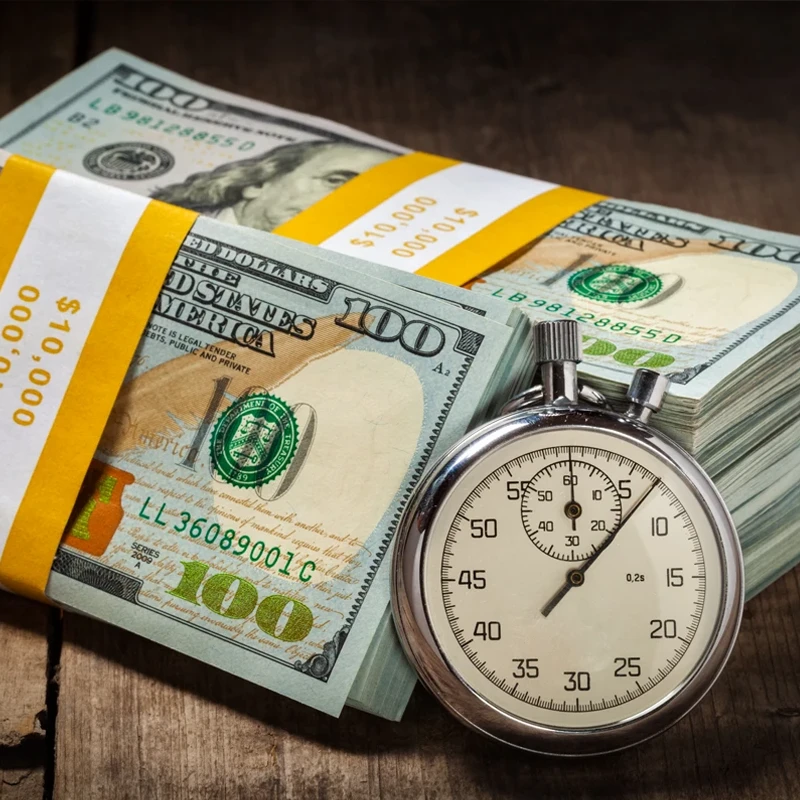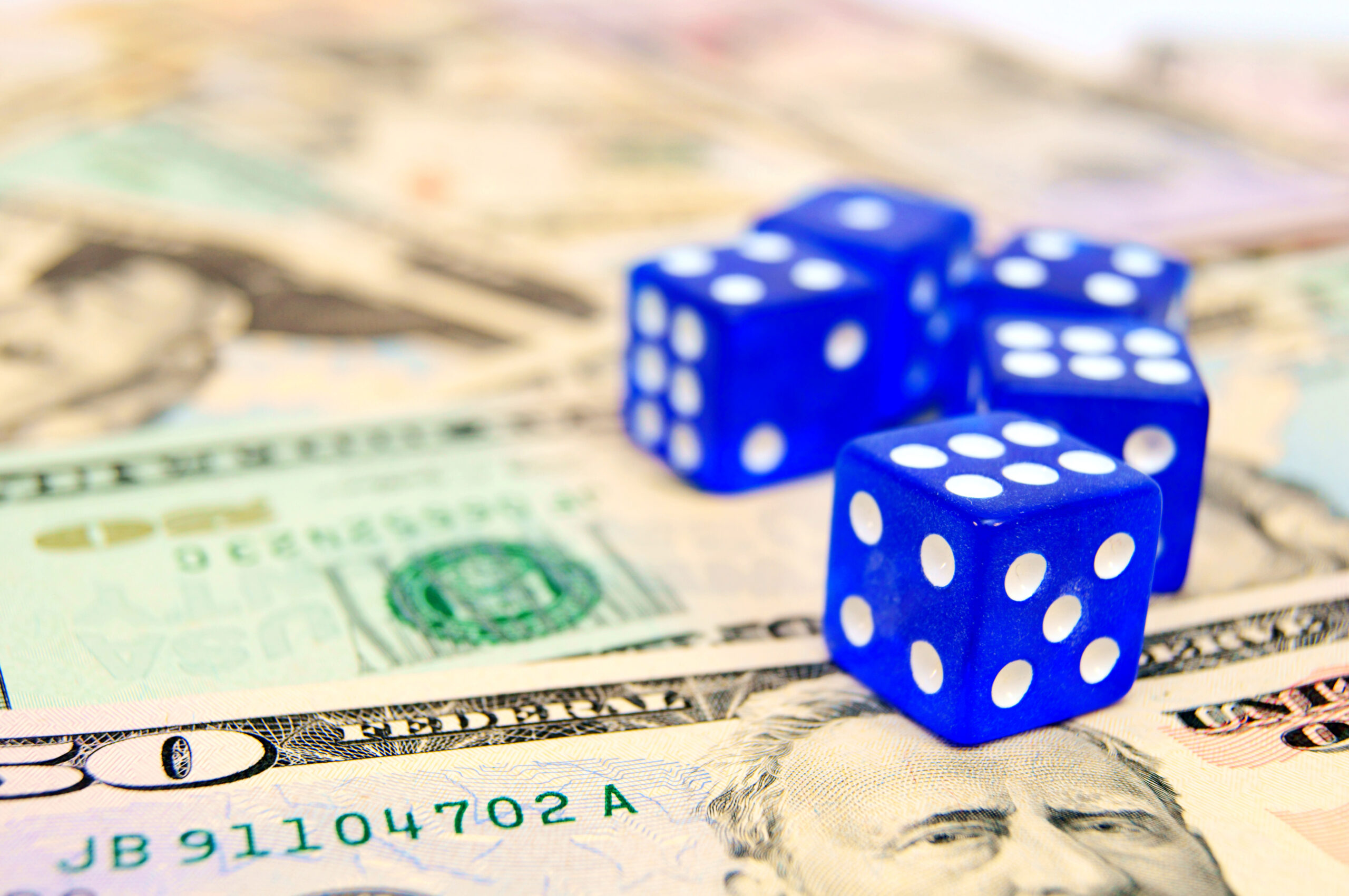Every bull run flashes “FREE MONEY” in neon—and millions of investors start sprinting after the hottest ticker like tourists chasing a departing tour bus. The result? They pull a hamstring in their portfolio. According to DALBAR’s latest Quantitative Analysis of Investor Behavior, the average equity investor grabbed just 16.54% in 2024 while the S&P 500 roared 25.02% [dalbar.com]—an 8.48-percentage-point face-plant, the second-worst gap of the past decade.
Those eight points aren’t a flesh wound; they’re compound fractures. Missing a single year’s surge by that margin shaves six figures off a typical retirement nest egg over 30 years of compounding. Worse, the people who jumped in late paid a premium on the hottest names and bailed at the first pullback—double damage.
Here’s the blunt truth: every time you lunge at yesterday’s winner, you pay twice—first in price, then in lost opportunity. The market rewards discipline, not desperation. Stick around, and we’ll show you how to beat FOMO before it beats your returns.
Why Chasing Torpedoes Your Returns

The “Buy-High, Sell-Low” Gap
Every time you pile into yesterday’s winners, you’re reenacting the most expensive mistake in investing history. Morningstar’s Mind the Gap 2024 study shows the average fund earned 7.3 % a year, but the average investor captured only 6.3 %—a full 1 % annual shortfall purely from mistimed buys and sells. That seemingly small gap slashes roughly 13 % of the wealth those funds actually generated over ten years. Strategence Capital
Hidden Cost #1 — Tax & Fee Drag
Short-term trades trigger ordinary-income tax rates (up to 37 %), versus a 0–20 % long-term capital-gains hit. Layer on bid-ask spreads and even “free” brokerage commissions, and every hot-stock hop quietly siphons off basis points that compound against you for decades.
Hidden Cost #2 — Lost Upside
The market’s biggest pops cluster in scary, volatile windows. Miss just the 10 best days over the past 30 years and your total return gets cut in half; miss the best 30 and you forfeit 83 % of what patience would have earned. Hartford Funds Chasing headlines usually means you’re out—or under-weight—when those days hit.
Hidden Cost #3 — Emotional Burnout
Constant monitoring, second-guessing, and regret drain mental bandwidth you could devote to career growth or building new income streams. Stress also nudges you toward more reactive trades, creating a self-reinforcing loss loop.
Bottom Line: Chasing is a two-sided torpedo: you pay a premium going in and a penalty coming out. Discipline isn’t just safer—it’s cheaper and statistically more profitable. Stop funding Wall Street’s yacht upgrades and start funding your own future.
Core Principle: Time in the Market Beats Timing the Market

Compounding Is a Relentless Machine
Leave $10,000 in the S&P 500 for 20 years at the index’s long-term 9–10 % annual clip and you cross $60 k. Pull that same cash out for just the market’s 10 best days and your ending value gets chopped by roughly half. J.P. Morgan Private Bank & PR Newswire
Those “best days” cluster around the ugliest headlines—seven of the top ten occurred within two weeks of a major drop, meaning you’d almost certainly be on the sidelines if you were panic-trading. Chase
Dollar-Cost Averaging Keeps You on the Field
Automating a fixed contribution (paycheck-level) forces you to buy more shares when prices dip and fewer when prices spike—turning volatility into a built-in discount program.
Studies show that investors who stay fully invested plus DCA new money beat their market-timing peers in 92 % of rolling five-year periods since 1990. Barron’s
Patience > Prediction
The market trends up roughly three out of every four years; guessing which quarter will be red isn’t a strategy, it’s roulette.
Your only sustainable edge is time and a system that never lets emotion dictate entry or exit.
Quick Action Step
Set a rule right now: money hits my checking → auto-sweeps into my diversified portfolio within 24 hours. No second-guessing, no headline excuses. That single automation flips the odds of long-term success permanently in your favor.
Action Plan: Build an Anti-Chase Investment System
Goal: Strip emotion from your portfolio so you never feel the urge to sprint after the latest headline.

The Anti-Chase System
Automate Cash-to-Portfolio
- What to do: Route a fixed % of every paycheck straight into your 401(k), IRA, or brokerage.
- Why it works: Money is invested before you can spend—or panic.
- 5-min setup tip: Add a second direct-deposit target in your HR portal (start at 10-15 %, bump 1 % each quarter).
Lock Your Asset Mix
- What to do: Draft a one-page Investment Policy Statement (IPS) with target allocation (e.g., 60 % global stocks / 30 % bonds / 10 % REITs).
- Why it works: Pre-deciding stops headline-driven pivots.
- 5-min setup tip: Use a free IPS template, print, sign—no signature, no trade.
Calendar-Only Check-Ins
- What to do: Review your portfolio on two preset dates per year—nothing in between.
- Why it works: Time-boxing kills impulse trades and reduces stress.
- 5-min setup tip: Drop recurring Google Calendar events titled “Portfolio Tune-Up — NO EXCEPTIONS.”
Rule-Based Rebalancing Bands
- What to do: If any asset drifts ±5 % from target, rebalance back.
- Why it works: Converts volatility into automatic “buy low, sell high.”
- 5-min setup tip: Enable ±5 % drift email alerts in your brokerage; disable mobile push.
FOMO Firewall
- What to do: Enforce a 48-hour cooling period for any trade outside your IPS.
- Why it works: The pause eliminates 90 % of regret trades.
- 5-min setup tip: Maintain a “Maybe Trades” note; archive ideas that don’t survive two days and IPS scrutiny.
Accountability Loop
- What to do: Share your IPS and rules with a trusted friend, spouse, or advisor.
- Why it works: Social pressure multiplies discipline.
- 5-min setup tip: Text them a screenshot of your IPS today; schedule a 15-minute Zoom check-in every six months.
Quick-Start Checklist (Do This Tonight)
Draft IPS (15 min): Write target allocation + rules in plain English.
Flip On Auto-Transfers (10 min): Payroll → 401(k) / bank rule → brokerage.
Add Two Calendar Reminders (2 min): “Review & Rebalance” — Jan 15 and Jul 15.
Enable Drift Alerts (3 min): Log in to your broker, set ±5 % email alerts.
Find an Accountability Buddy (5 min): Text a friend: “Will you keep me honest with my investing plan? 2 calls a year, 10 min each.”
Lock these six layers in place and you’ll physically remove the buttons that make chasing possible—turning discipline from a feel-good mantra into baked-in system code.
FOMO Antidotes: Behavior Hacks That Keep You in the Game

Hack #1 The 48-Hour Cool-Off
Any “can’t-miss” tip must sit in a sandbox for two full market days before you touch real money.
Research shows FOMO is directly linked to over-trading and short-term speculation; pausing breaks that cycle. ResearchGate
Bonus: seasoned traders often wait three days after a big price move so the hype and bid-ask spreads settle. StocksToTrade
Hack #2 Park It on Paper
Log every impulse buy in a watch-only list (ticker, thesis, timestamp).
Review after 30 days: most ideas will have fizzled or reversed—proof your restraint saved real cash.
Hack #3 Once-a-Day Data Diet
Delete real-time push alerts; switch to a single end-of-day email or dashboard refresh.
Investors who peek at balances daily see losses 41 % of the time and act rashly; spacing out views slashes that to 12 %. RiversEdge Team
Hack #4 Pre-Commit With a Buddy
Screenshot your Investment Policy Statement (IPS) + any new trade idea to a friend or spouse.
The mild embarrassment of explaining a hype-trade out loud is usually enough to shut it down.
Hack #5 Reframe the “Miss”
When a rocket stock leaves without you, say: “Good for them—my plan still compounds.”
Celebrating discipline keeps your dopamine loop intact without risking capital.
Conclusion & Call-to-Action: Win the Marathon, Ignore the Sprints

Every headline pumping a “can’t-lose” trade is just noise engineered to separate you from your money—and your sanity. The real wealth builders? They embrace boredom. They automate contributions, rebalance on a schedule, and let compounding do the heavy lifting while everyone else exhausts themselves chasing crumbs.
Your 30-Day “No-Chase” Challenge
Sign your IPS today. Print it, date it, and stick it near your screen.
Automate at least one paycheck sweep into your diversified portfolio before the next market open.
Delete real-time market alerts and switch to a single end-of-day dashboard check.
Log every impulse trade idea in your “Maybe Trades” note—then let the 48-hour clock run.
Meet your accountability buddy on day 30 and grade yourself: zero chases = pass, anything else = revise your system.
Commit to those five moves for one month and you’ll feel the shift: less anxiety, more clarity, and—most importantly—an investing process that quietly compounds without drama.
Remember: Wealth favors the patient, not the impulsive.









